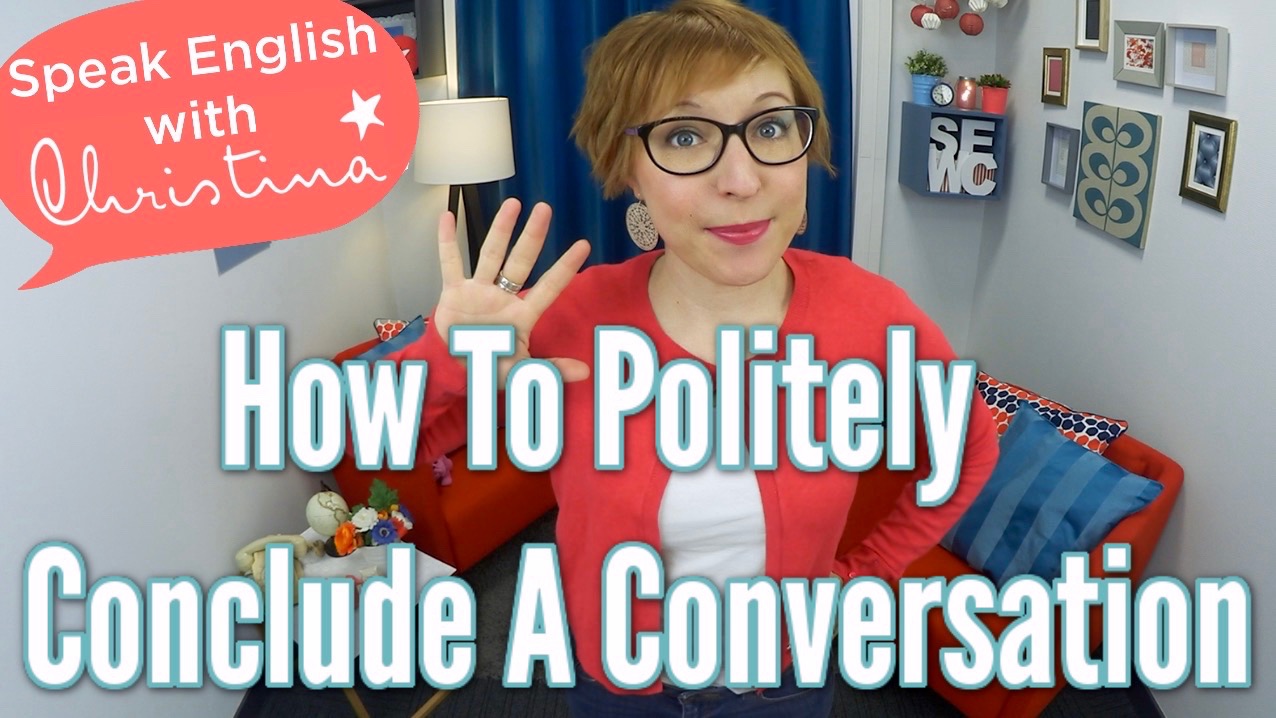
Hey there, and welcome to Speak English with Christina, where you’ll have fun becoming fluent in American English.
I have a question for you: How comfortable do you feel using the telephone in English? And when you call potential clients, do you make a good impression?
Even if you’re not totally comfortable on the phone, if you want to pitch your offer to clients, you have to phone your clients at some point. And today, you’ll learn how to make a good first impression when you call a potential client in English.
Let’s go!
Before we look at any expressions, here’s something to keep in mind. Your intonation and pronunciation are extremely important on the phone. We can’t see you, so we hear your personality, your enthusiasm, and your positivity in your intonation.
As we say: “It’s not what you say, it’s how you say it.” So all during this video pay special attention to my intonation when I give you the key phrases. Even stop the video to repeat and practice your intonation.
Introducing yourself clearly
For this episode, we’ll suppose that you’re calling a new potential client, with no appointment. In English, we call this cold calling. In the first 30 seconds of your call, your prospect should learn who you are, why you’re calling, and what you do.
Here’s an example. Let’s imagine I work in transport logistics and want to talk with shipping companies.
Hi, my name is Christina Rebuffet. Remember your intonation. Then pause a second for them to process what you said.
Next, “I’m calling from CRB Logistics” Again, a short pause to let the prospect process what you said.
“In one sentence, what we do is help companies ship products to South America more quickly and at lower prices. Is this a bad time for a quick chat?” Be sure to watch the video to practice the intonation.
Notice that you didn’t say “Is this a good time for a quick chat?” People have the reflex of responding “No, sorry, I’m busy right now.” But we put a little extra stress on “bad time”, so people will more likely respond “Um, no, this is ok.” Or something similar.
Show you know them
If possible find a little information about your potential client. This way, you show that you took the time to learn about them and choose to call them for a specific reason. You’re not just calling a long list of random people.
For example, you can say something like “I saw on your company website that you ship goods out of ports in Florida and Texas.”
If it’s an individual, maybe you looked at their LinkedIn profile, or a personal site. Or maybe you read about them in a business magazine. The important thing is to show that you’ve researched them a little.
Start by asking, not pitching
Next, ask a few questions to learn more about your prospect. If we continue from the introduction, this sounds like: “I saw on your company website that you ship goods out of ports in Florida and Texas. Can you tell me more about your shipping process?”
Then, let them speak. Listen and take notes. As you listen, use discourse markers to show that you’re actively listening.
In my course Successful Small Talk, there’s an entire lesson on discourse markers! Little words and sounds like “Umhm”, “Got it,” “Interesting”, “I see”, etc. to show that you’re following.
If you just sit in silence as the client talks, they may think the line cut! So it’s important to show you’re listening with your voice.
Here are some other questions you can ask. Again listen to the video and repeat this to work on your intonation:
What is your current process for shipping to South America?
Who do you work with, like what types of clients or partners?
What challenges do you face when you ship goods?
Of course adapt the questions to your own activity and potential clients! But I don’t have to tell you that!
Thank and summarize
After you’ve asked questions, listened to their answers, and made notes, thank them for sharing the information. Then summarize what you understood, just to be sure.
Thank them by saying “Thanks for sharing all of that information.” For the intonation, be sure to watch the video!
And start your summary with “If I understand correctly…”
And you can structure your summary as:
- What their company does
- How they currently do the activity you discussed
- Who they do it with
- The challenges they have
Try to keep each part to just 1 or maybe 2 sentences. The summary is just to show that you totally understand your prospect’s situation before launching into your pitch.
As for how to pitch in English, that will be the subject of another episode! But now you have the exact steps and expressions you need to make a good impression when you cold call a potential client.
Be sure to watch the video, pause, and practice to have correct, friendly intonation!
Now, what about you?
How do you feel before you have to call a potential client or partner? How do the calls go, in general? Let’s continue this conversation in the comments!
And if you want to immediately understand 12 everyday expressions that Americans say fast, get my American Accent Survival Kit, a free pronunciation and comprehension lesson with exercises.
And of course subscribe to my channel, so you get a new English lesson each week! Thanks for watching Speak English with Christina, and I’ll see you next time!
More English lessons...
Click the image to see the lesson









Christina is a smart cookie. She always has brainwaves. When it comes to English learning, her cherry blossom season takes the internet by storm. She shows light at the end of the tunnel. Get success with colors through her hard work. It is the way to go. Christina at her finest! Outta this world!
Thank you Chris, you’re awesome. I’ll keep on following tour vblogs
jaime
Great, thanks so much Jaime! And welcome to the community!
As you already said it is important to practice and be prepared. Sometimes the conversation goes fluenttly other times I’m looking for words not sure of what I want to say despite I was ready for the best.
Hi Louise, you’re right, it is important. That being said, sometimes the conversation goes well, and sometimes it goes less well. It can depend on the person you’re talking to, how interested they are in what you’re saying, if you feel a connection with the other person, etc. And that’s true in any language, but the fact that it’s in a different language does add an additional challenge.
Thank you po. God bless you mabuhay po kayo.
Thanks so much Magali!
Hello Christina,
What ‘s about you?
I really love all your English lessons: so efficient and funny!!! Congratulations!!!
Yours,
C + H 🙂
Hi Carine & Hervé! Thanks so much and I’m glad you enjoyed this lesson too! All the best to both of you!
You asked how can we make this better for you. My vote is for audio! I typically learn Best by listening. I have to admit that I have a stockpile of goodby posing guide Facebook posts that I have saved for later. Now it is so overwhelming. I’m always looking for things to listen to. I think I just like hearing the voices and the emotion and intonation behind them. That said, the way you write in actionable lists are a great follow up. I still use those too!
Hi Larry, thanks so much for the feedback, and actually, you can play the video on your smartphone and just put headphones to listen (and not watch) to focus on listening to the sounds of English! Or try podcasts! I really like All Ears English podcast, which I’m sure you’ll enjoy too! Thanks for the comment!
Thanks a lot, Christina. This was an awesome video class.
Thanks so much Gabriela! Glad you liked it!
Get help with training your ear and working on intonation, and find your?voice with the right teaching. cialis cheap
Hi Cialis, Yes, that is exactly what you need to make a good impression on potential clients (well, part of it. You also need a good product and pitch, but that’s for another episode!) But definitely, intonation, training your ear to understand, and finding your English voice are super important!